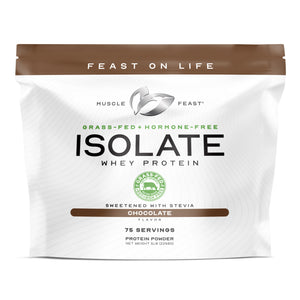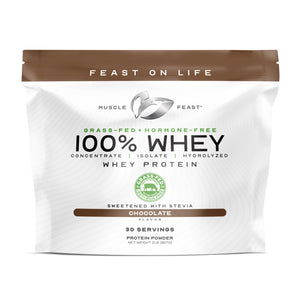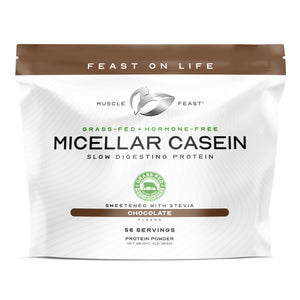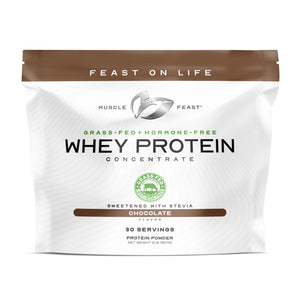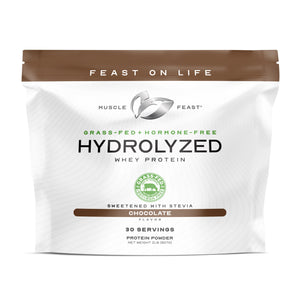Heavy metals in food are a growing concern for consumers, scientists, and regulators. Arsenic, cadmium, lead, and mercury occur naturally in soil and water, and plants and animals absorb them as they grow. That means they can’t be eliminated completely from the food supply. Instead, the focus of U.S. regulators is to keep levels as low as possible to protect health while maintaining access to nutritious foods.
The FDA: Keeping Food Safe
The Food and Drug Administration (FDA) is the lead agency for food safety. Its goal is not to eliminate heavy metals, but to reduce them where possible. It does this in three main ways:
-
Monitoring foods through the Total Diet Study, which tests hundreds of everyday foods for nutrients and contaminants.
-
Setting action or guidance levels when certain foods test high for metals.
-
Launching initiatives like Closer to Zero, which focuses on reducing arsenic, cadmium, lead, and mercury in baby and toddler foods.
The FDA’s approach reflects balance: rice and leafy greens may naturally contain arsenic or cadmium, but they’re also healthy staples. The agency’s job is to lower risks without cutting nutritious foods from people’s diets.
The EPA: Safe Drinking Water Standards

The Environmental Protection Agency (EPA) protects against heavy metals through the Safe Drinking Water Act, which sets legally enforceable limits in public water systems. These standards apply nationwide and are measured in parts per billion (ppb):
-
Arsenic: 10 ppb (≈20 µg/day at 2 liters)
-
Cadmium: 5 ppb (≈10 µg/day)
-
Inorganic mercury: 2 ppb (≈4 µg/day)
-
Lead: Action level of 15 ppb (≈30 µg/day), with a proposed update to 10 ppb (≈20 µg/day).
Unlike food, where exposure varies widely, everyone drinks water, making EPA standards one of the most universal protections. These rules are reviewed every six years to stay aligned with new science.
ATSDR: Minimal Risk Levels
The Agency for Toxic Substances and Disease Registry (ATSDR) takes a different approach. Instead of enforceable rules, it publishes Minimal Risk Levels (MRLs) conservative daily intake estimates unlikely to cause harm.
-
Arsenic (chronic oral): 0.3 µg/kg/day (≈24 µg/day for 80-kg adult; 18 µg/day for 60-kg adult).
-
Cadmium (chronic oral): 0.1 µg/kg/day (≈8 µg/day or 6 µg/day).
-
Mercury: 0.1 µg/kg/day for methylmercury (≈6–8 µg/day adults).
-
Lead: No MRL no safe threshold exists.
These values act as early warning benchmarks for public health agencies.
What People Actually Consume: Wong et al. (2022)
A 2022 review by Wong, Roberts, and Saab asked how real-world exposures compare to these limits. Using FDA and NHANES data, they found:
-
Arsenic: Typical U.S. exposure ≈0.18 µg/kg/day close to ATSDR’s 0.3 µg/kg/day.
-
Cadmium: ≈0.26 µg/kg/day well below EPA’s reference dose (1 µg/kg/day) but above ATSDR’s stricter 0.1 µg/kg/day.
-
Lead: FDA’s interim level for children is 0.26 µg/kg/day; actual background intake is ≈0.24 µg/kg/day almost equal.
-
Methylmercury: ≈0.05 µg/kg/day, about half of EPA’s reference dose (0.1 µg/kg/day).
Takeaway: exposures for arsenic, cadmium, and especially lead already push against protective thresholds, leaving little margin of safety.
Proposition 65: California’s Right-to-Know Law
California’s Proposition 65 adds another layer. Unlike FDA or EPA, it doesn’t set nationwide limits it requires consumer warnings when exposures exceed conservative “safe harbor” thresholds:
-
Lead MADL (reproductive): 0.5 µg/day
-
Arsenic NSRL (cancer): 10 µg/day
-
Cadmium MADL (oral): 4.1 µg/day
These numbers are much stricter than federal standards. For example, California’s lead limit (0.5 µg/day) is far lower than EPA’s water-based equivalent (≈30 µg/day). As a result, many foods and supplements legally require Prop 65 labels even though they meet all federal and international safety standards.
The intent is disclosure, not defining absolute safety. But the result is mixed: consumers get more information, while businesses often add the warning label preemptively to avoid lawsuits.
Clean Label Project: Advocacy Testing
The Clean Label Project, a nonprofit, adds consumer pressure by testing products and publicizing results. In its 2025 Protein Study 2.0, the group analyzed 160 protein powders and reported over 35,000 data points. Nearly half of products exceeded at least one Proposition 65 threshold.
Patterns matched known science:
-
Plant proteins (pea, hemp) contained more cadmium and arsenic than whey.
-
Chocolate flavors often tested higher than vanilla due to cocoa sourcing.
-
Organic products were not always lower; some tested higher for lead or cadmium.
Because the study uses Proposition 65 benchmarks, many “exceedances” reflected California’s strict thresholds rather than federal safety concerns.
Muscle Feast’s Approach:
At Muscle Feast, we recognize heavy metals are a natural concern. While no company can eliminate them entirely, we focus on responsible sourcing, testing, and transparency.
-
Supplier controls: We only buy from suppliers who provide Certificates of Analysis for heavy metals.
-
Testing: Random third-party testing on our core products, with results published by Labdoor for public review.
-
GMP manufacturing: Our facilities follow Good Manufacturing Practices to ensure consistency and prevent contamination.
-
Prop 65 compliance: Even though our tests show levels below Prop 65 thresholds, we include the warning label to avoid costly litigation and stay compliant.
-
Transparency: By sharing results openly, we give consumers confidence in the safety of our products.

Conclusion:
Heavy metals in food are a shared challenge across science, regulation, and consumer advocacy. The FDA monitors the food supply and aims to lower levels, especially for children. The EPA sets legally enforceable limits in drinking water. ATSDR provides conservative health benchmarks. California’s Proposition 65 requires disclosure at thresholds much lower than federal standards, and advocacy groups like the Clean Label Project amplify these findings in the marketplace.
In this landscape, Muscle Feast’s role is clear: source responsibly, test carefully, follow strict GMP, and share results openly. While heavy metals cannot be eliminated, they can be managed responsibly, and our commitment is to give customers the transparency they need to make informed choices with confidence.
- Conrad RN

References:
U.S. Food and Drug Administration. (2024, March 12). Environmental contaminants in food. U.S. Department of Health and Human Services. https://www.fda.gov/food/chemical-contaminants-pesticides/environmental-contaminants-food
U.S. Food and Drug Administration. (2025, January 6). Closer to Zero: Reducing childhood exposure to contaminants from foods. U.S. Department of Health and Human Services. https://www.fda.gov/food/environmental-contaminants-food/closer-zero-reducing-childhood-exposure-contaminants-foods
U.S. Food and Drug Administration. (2022, July). Total Diet Study: Fiscal years 2018–2020 elements data (FDA Total Diet Study report). U.S. Department of Health and Human Services. https://www.fda.gov/food/science-research-food/total-diet-study
U.S. Environmental Protection Agency. (2024, March 28). Overview of the Safe Drinking Water Act. United States Environmental Protection Agency. https://www.epa.gov/sdwa/overview-safe-drinking-water-act
U.S. Environmental Protection Agency. (2024, October 25). How EPA regulates drinking water contaminants. United States Environmental Protection Agency. https://www.epa.gov/sdwa/how-epa-regulates-drinking-water-contaminants
U.S. Environmental Protection Agency. (2024, April 20). Safe Drinking Water Act evaluation and rulemaking process. United States Environmental Protection Agency. https://www.epa.gov/sdwa/sdwa-evaluation-and-rulemaking-process
U.S. Environmental Protection Agency. (2024, December 12). National Primary Drinking Water Regulations. United States Environmental Protection Agency. https://www.epa.gov/ground-water-and-drinking-water/national-primary-drinking-water-regulations
Agency for Toxic Substances and Disease Registry. (2022). ATSDR Minimal Risk Levels (MRLs) for hazardous substances. U.S. Department of Health and Human Services. https://www.atsdr.cdc.gov/mrls/index.html
Agency for Toxic Substances and Disease Registry. (2023, October 24). About ATSDR. U.S. Department of Health and Human Services. https://www.atsdr.cdc.gov/about/index.html
Wong, C., Roberts, S. M., & Saab, I. N. (2022). Review of regulatory reference values and background levels for heavy metals in the human diet. Regulatory Toxicology and Pharmacology, 130, 105122. https://doi.org/10.1016/j.yrtph.2022.105122
Office of Environmental Health Hazard Assessment. (2001). Proposition 65 safe harbor levels: How chemicals are added and levels established [PDF]. California Environmental Protection Agency. https://oehha.ca.gov/proposition-65/law/proposition-65-law-and-regulations
Office of Environmental Health Hazard Assessment. (n.d.). About Proposition 65. California Environmental Protection Agency. https://oehha.ca.gov/proposition-65/about-proposition-65
Office of Environmental Health Hazard Assessment. (n.d.). Proposition 65 in plain language. California Environmental Protection Agency. Retrieved September 24, 2025, from https://oehha.ca.gov/proposition-65/general-info/proposition-65-plain-language
Clean Label Project. (2025, January 6). Protein Study 2.0: 2024–25 protein powder category report. Clean Label Project. https://cleanlabelproject.org/wp-content/uploads/CleanLabelProject_ProteinStudyWhitepaper_010625.pdf

